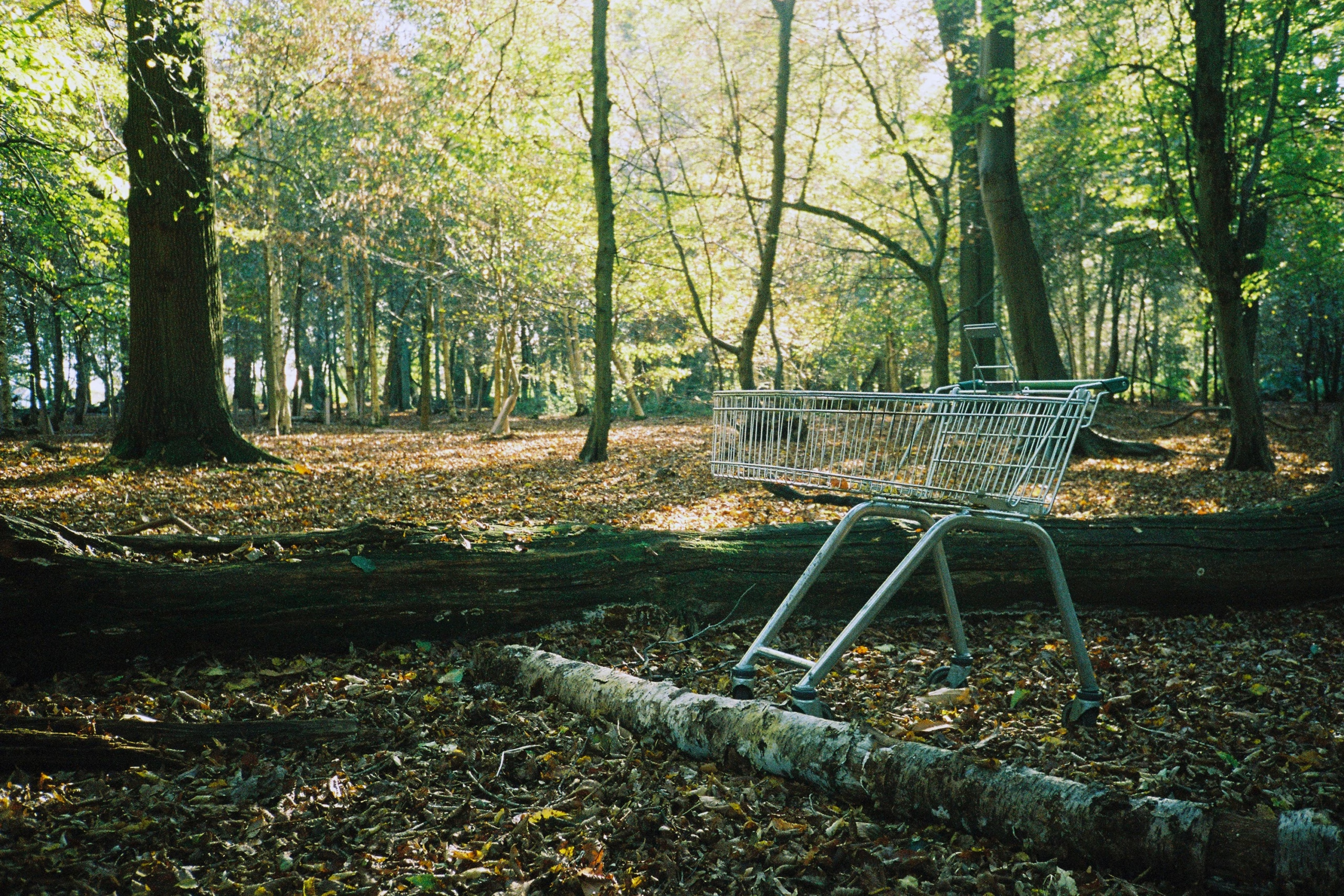Two trends in the sustainability arena are moving in lockstep these days: consumer interest in supporting eco-friendly products and rising corporate interest in convincing consumers their products are, in some way, eco-friendly. This intersection has led to an active and acrobatically creative Greenwashing trend—the use of suggestive or outright misleading language to give the impression a product is environmentally sensitive when the opposite is true.
There are several ways this is done, and you’ll likely recognize many of them from your own reading and shopping experiences. Brands don’t have the luxury of being subtle or coy—they put their claims front-and-center in their ads or on packaging to grab your attention. These examples of the most obvious warning signs that companies are greenwashing their products will likely ring a bell:
- Characterizing something as ‘Natural’
- Using vague or suggestive language
- Misleading certifications
- Invoking a hidden trade-off, or ‘lesser of two evils’
- Not providing any evidence
It’s Natural!
Most people will intuitively assume a product labeled as Natural conforms to obvious and idealistic definitions of it. If you’ve formed an image in your mind right now, it’s probably of something that’s grown free of artificial processes or additives and contains biologically beneficial elements. But there’s a lot of room in there for shady dealings.
If the product doesn’t say it’s 100% natural, the claim may only apply to one specific ingredient or component among a long list of other synthetic ones. Or it may be something that began as a natural ingredient but was processed in a most unnatural way to make it fit for purpose. For instance, so-called plant plastic is made to sound like it’s a bunch of wheat grass or potato pieces that are pressed into a cup or plate. In actuality, machines just use the plants as a feedstock to obtain carbon molecules that are turned into polymers. Nothing natural about it.
Vague or Suggestive Language
Many terms don’t have a specific or legal definition—like eco-friendly, believe it or not. Another one that can be used freely in any situation is green. These terms are open to interpretation and can refer to almost any part of the product’s life cycle. Since they can be technically accurate in these tightly defined situations, they are fair game for the marketing department.
In this case, the use of terms like 100% Green or 100% Eco-friendly signals that something is clearly wrong. Those terms don’t describe a real situation—what would 50% green or 50% eco-friendly look like? Such exaggerated imagery or the suggestion that something is utterly, 100% planet-friendly is probably a sign the seller is overcompensating for some bad news.
Another vague claim to beware of is when a product is promoted as being carbon neutral. It’s virtually impossible for any product to be carbon neutral—meaning, all the materials that are sourced to make it, the energy used to assemble it, the paper or plastic used to box or wrap it, the vehicles used to ship it and the electrons that go into advertising it or selling it online are somehow entirely carbon-free. Plastic is literally made from methane, so the idea it could ever be carbon neutral is nonsense.
More likely, certain aspects of the product have had their specific and minimal carbon impacts offset with carbon credits. These credits represent action taken elsewhere in the world to reduce or eliminate carbon emissions that would’ve otherwise happened. In many cases, those projects are legitimate and do a great deal of good, but they certainly don’t underpin a broad spectrum claim of carbon neutrality for a complex product.
Misleading Certifications
Irrelevant environmental claims do a great job of making a buyer think a product is sustainable even though the flaunted “accomplishments” have no real benefit.
What to look for? A business that invokes another eco-sounding entity like How-to-Recycle that you assume has applied a rigorous review process but, in fact, never does product testing. In the case of How-to-Recycle, their elaborate triangle of arrows makes you think the product you’re holding has been evaluated as recyclable and therefore good for the planet. In fact, it’s just an industry-funded web site that will tell you whether or not the item you’ve purchased could be recycled—except you’re most likely to just assume it’s fine.
Some companies will actually create their own “certifications.” Consider Dart Corporation, the $3 billion manufacturer that’s been profiting from its signature plastic Solo Cup for decades—but now realizes consumer sentiment is turning against it. They’ve introduced a line of plastic cups with up to 20% recycled content—known as rPET, or something catchy with those letters—which is a miniscule amount of beneficial engineering.
And yet, those cups are “certified” with the ProPlanetTM emblem, suggesting they’ve achieved a commendable level of eco care. Dive deeper, and you find it’s their own certification that they bestow on all products having at least…20% recycled plastic content.
Trying to get you to believe that these imprimaturs translate into overall eco-friendly products is a particularly cynical technique because of the extensive effort that goes into the deception.
Hidden Trade-Off
When you think about eco-friendly products, do you usually think about the entire item? All the pieces built into a cellphone? All the steps a fashion item goes through to be woven, dyed and assembled? What about a basic consumer product like a shampoo bottle or a deodorant stick? Many steps of production are required for each of these things, and small, discrete steps can be done in an eco-friendly way. But those small improvements do not translate into an entire product that is now an eco-friendly alternative.
An increasingly popular technique at misdirection are products made from “Ocean Bound” plastic. This moniker is meant to suggest that waste plastic has been removed from the ocean where it could have done great damage, and then beneficially transformed into a soda bottle or jacket stuffing or a cocktail cup. People feel virtuous about such choices and are distracted from the basic fact that they’ve just bought something plastic.
Ocean Bound plastic, however, is no redeemer. It is broadly defined as any plastic within 35 miles of a major body of water that could get to the ocean in the right conditions. So, it could literally be at a collection center 34 miles from the coast and be sold and marketed as Ocean Bound. The products made from it will proudly emblazon such claims as Protecting the Ocean or Saving Marine Life to earn your attention. But really, you have most likely been sold a material that was neatly collected and dropped off in a parking lot.
The evil step-sibling of this technique is called ‘the lesser of two evils.’ Two products are bad for the planet, but one is just slightly less bad. Consider two bottles of soda side-by-side on a store shelf. One is in a virgin plastic bottle while the other touts itself as being made with 50% post-consumer recycled plastic—there’s that rPET again. The more mindful shopper will likely trigger on words like “recycled” and reach for that one—assuming they like the soda in it.
But the minimally marginal benefit of the recycled plastic component belies the fact that it’s…still plastic, could only be recycled one time before it has to be downcycled, and therefore makes the 50% virgin plastic portion of the bottle non-recyclable. The recycled component is in a different life stage, shall we say, and can’t be treated the same way as the new stuff. So, while part of the bottle went around a second time, it’s blocking the new plastic portion of this latest bottle from being reused.
Unproven Claims
The last one to touch on are claims that simply have no validity—and seem a little too good to be true. There are few rules yet on what a company is required to verify in its sustainability claims, so it’s been open season on such statements of virtues and benefits.
In this one, the consumer is more on their own in discovering the truth and employing their healthy skepticism, and should use their common sense when they see really impressive claims.
For example, if a product is meant for heavy-duty use or a long shelf-life, a claim of “compostable” or “biodegradable” seems far-fetched. Nothing designed for rough use or to last on a shelf for many years is going to be aware it’s now in the trash bin and spontaneously transform into a healthy soil amendment for your garden. One way to self-check on these types of claims is to ask yourself what you’ve observed in the past when you’ve used a particular product.
Another clever way to mask their ill intentions is to attribute the claim to a part of the product you can barely see or feel. Perhaps a clothing manufacturer asserts that the stitching in its jeans is thread made from recycled plastic—though it never says where it sources those threads from or provides proof their vendor is applying strict standards. They also know you’ll never remove any of the stitching to see for yourself if they feel or look any different. So, it’s fairly safe for them to broadly promote the sustainability of their jeans when, really, there’s just a few yards of stitching that may or may not be of minor value.
Many countries are moving to adopt legal standards and definitions for claims in this area, and soon it will be standard procedure to document and prove the validity of any eco-friendly claims.
In the meantime, the buyer must beware as much as ever, and continually question the terms and intentions of the claims they’re seeing.





